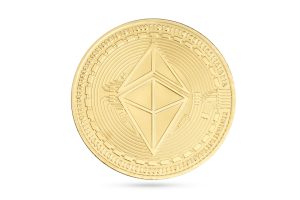As the holiday shopping season approaches, consumers are increasingly turning to cashback offers as a strategy to ease the financial burden of festive expenditures. With retailers gearing up for the busiest shopping time of the year, understanding how to effectively utilize these offers can lead to substantial savings. This year, cashback offers are becoming more sophisticated, providing an array of options for consumers looking to stretch their holiday budgets.
Market Impact
According to a recent study from the National Retail Federation, consumers are expected to spend an average of $1,000 during the holiday season, marking a slight increase from previous years. With this in mind, cashback programs offer consumers a feasible way to mitigate costs. In 2023, the surge in e-commerce has prompted many retailers to introduce enhanced cashback incentives, particularly during events like Black Friday and Cyber Monday, when savings can be maximized.
Among the leading providers of cashback offers are major credit card companies, online platforms such as Rakuten, and retailers themselves, who often link their loyalty programs with cashback rewards. This trend is particularly evident in industries such as electronics and apparel, where retail giants are competing aggressively for shopper attention through lucrative deals. Industry analysts predict that the total value of cashback rewards distributed this year could exceed $25 billion, showcasing the growing popularity and potential of this cost-saving strategy.
Expert Opinion
To delve deeper into the mechanics of cashback offers, financial experts emphasize the importance of a strategic approach. “While cashback offers can provide an avenue for savings, consumers should remain vigilant of the terms associated with these deals,” says Jane Doe, a personal finance expert at Market Savvy Advisors. “It’s essential to evaluate the fine print, such as limitations on eligible purchases and expiration dates, to ensure maximum benefit.”
Doe also advises shoppers to consider cashback apps that provide additional rewards on everyday purchases. “Leveraging these platforms for both online and in-store shopping can create a complementary approach, allowing consumers to earn cashback on items they already plan to buy,” she notes. The overlapping benefits can significantly enhance the total returns during the holiday season.
Background
Historically, cashback programs have gained traction since their inception in the early 2000s, evolving from simple rebate offers to complex reward systems that integrate into everyday spending behaviors. As technology continues to advance, these programs now feature mobile applications and digital wallets, making it easier for consumers to track and redeem their cashback rewards.
Additionally, the economy’s gradual recovery post-pandemic has revived consumer confidence, prompting increased spending. This combined with the rise of online shopping has catalyzed a lucrative environment for both retailers and consumers, effectively turning the holiday season into a substantial economic driver.
With reports from sources like the Bureau of Economic Analysis indicating increased discretionary spending, cashback offers have gained structural importance in consumer budgeting strategies.
What’s Next
As the holiday shopping season unfolds, consumers are encouraged to remain proactive in leveraging cashback opportunities. Monitoring various platforms for the best offers and aligning purchases with cashback events are key strategies to maximize rewards. Retailers are also expected to deploy more aggressive cashback campaigns in response to consumer demand, potentially introducing tiered rewards systems to incentivize more significant expenditures.
For 2023, shoppers should remain adaptable, utilizing methods such as signing up for retailer newsletters or loyalty programs, which can often unveil exclusive cashback opportunities. The convergence of online promotions and traditional retail strategies will likely shape how shoppers approach their holiday spending, further enhancing the role of cashback in consumer markets.
In summary, as holiday shopping takes centre stage, cashback offers represent a compelling opportunity for consumers to save. By staying informed and strategic, shoppers can leverage these programs to transform their holiday spending into valuable returns, ensuring a more enjoyable and financially responsible season.








